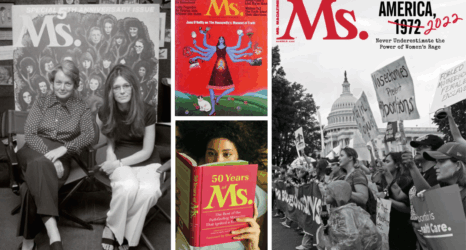The U.S. ranks 22nd out of 153 countries in terms of women’s wellbeing, according to a new global index prepared by Georgetown University’s Institute for Women, Peace and Security together with the Peace Research Institute of Oslo that aggregates data on women’s inclusion, access to justice and security. (Among the top performers, Iceland is in the top spot and Canada ranks 7th.)
From Hollywood to Congress, a wave of sexual harassment accusations is coming to light in the U.S. These stories prompt us to consider women’s overall wellbeing in our nation, and where the U.S. stands compared to the rest of the world on gender issues. Some of the key factors that might explain the U.S.’ relatively low rank—which is also 13 places below its global ranking on income per capita—include violence against women and gaps in political representation.
Domestic violence and issues of gender gaps in community safety, for instance, play a role. Rates of lifetime intimate partner violence in the U.S. exceed the average among other advanced economies by more than 10 percentage point. The U.S. also faces an additional crisis due to the wide availability of firearms; the risk of homicide for women in a domestic violence situation increases five-fold when a gun is present. But women are also seeking safety outside the home, in their communities. Only about one in four (26 percent) of women say that they feel safe walking alone at night in their community—some 20 percentage points lower than the share of men and much larger than the average global gender gap of 7 percentage points.
The U.S. also suffers from a persistent gender gap in politics—and a lack of legal protections for women. Only one in five congressional seats are held by women. This makes the U.S. the only top-25 country to fall below the global average on the political representation indicator. Much of the world has boosted women’s political representation through quota systems, but the U.S. has not. Absent additional interventions, it will take the U.S. more than a century to reach gender parity. And while the U.S. does well in the World Bank’s Women, Business, and the Law report, the U.S. has not passed a constitutional amendment barring discrimination against women. Nor is it a signatory to the United Nations Convention on the Elimination of All Forms of Discrimination against Women, which has been ratified by 187 states (Iran, South Sudan, and Somalia are other hold-out nations).
There is ample room for the U.S. to improve women’s wellbeing, but doing so will require a concerted effort by U.S. policymakers. Drawing on examples of success from other countries around the world, there are several options for reform that should be considered.
For starters, the U.S. could work to keep firearms away from domestic violence perpetrators. With the introduction of the Lautenberg Amendment in 1996, any individual who has been convicted of domestic abuse is legally unable to buy a firearm. However, as was recently evidenced in the tragic Texas church shooting, this law has limitations. Many crimes are not included in the instant-check database. The military in particular does not have an established process to report domestic abuse; domestic abuse by boyfriends is not included; and stalking convictions do not prohibit individuals from purchasing guns. A new law is needed to address these loopholes and expand the breadth of the Lautenberg Amendment.
Raising awareness about domestic violence through multimedia and TV programming could strengthen women’s safety—and improve the lives of entire families and communities. Examples to change gender norms through entertainment include the Bell Bajao! program in India—which called on men to end violence against women through a series of television, radio, and print ads that reached over 130 million Indians. The program has increased knowledge of domestic violence, changed attitudes and mobilized action to reduce domestic violence. In South Africa, the Soul City Program of 1994 used drama and entertainment to reach more than 80 percent of South Africa’s population and draw attention to the issue of domestic violence. The program increased overall participation and community action on intimate partner violence, raised awareness of key social services and reduced overall rates of violence.
Supporting women in the political pipeline could help. Research shows that there’s little difference in electoral success rates between male and female candidates, but there remains a large gap in women’s representation at every level of public office. Organizations that encourage, train and support more women candidates—like Emerge, She Should Run, Women’s Campaign Forum or EMILY’s List—can make a difference in improving diverse women’s representation in politics. Political parties can also help strengthen the pipeline by approaching and recruiting women to run.
Passing a non-discrimination amendment could also prompt major improvements. In Sweden, the Discrimination Act (DA) legally prohibits direct and indirect gender discrimination. It also contains legal requirements to enact proactive measures such as equality plans, as well as detailed rules on Gender Pay Gap (GPG) action plans. The U.S. would be well-served to pass a constitutional amendment barring discrimination against women. Such a guarantee would serve as a foundation for litigation and provide a stricter judicial standard for deciding cases of sex discrimination.
Measures to advance gender equality in the workplace, including equal pay for equal work and childcare and leave benefits, would help close persistent gender gaps in the economy. The U.S. has no legal mandate for equal pay. It is no surprise, then, that the gender wage gap in full-time employment averages 20 cents on the dollar. This gap is even wider for non-white women. The U.S. is also one of the two countries globally that does not legally guarantee paid maternity leave, which, as documented in the recent UN High Level Panel on Women’s Economic Empowerment, is a primary driver of disparities in the labor market.
The WPS Index provides both a simple ranking and a comprehensive picture of achievements and gaps across a critical range of fronts in the US, and many other countries, including areas where greater attention and investments are needed. It will be interesting to see how the U.S. fares over time—which we will capture in updated WPS Index rankings in two years.





